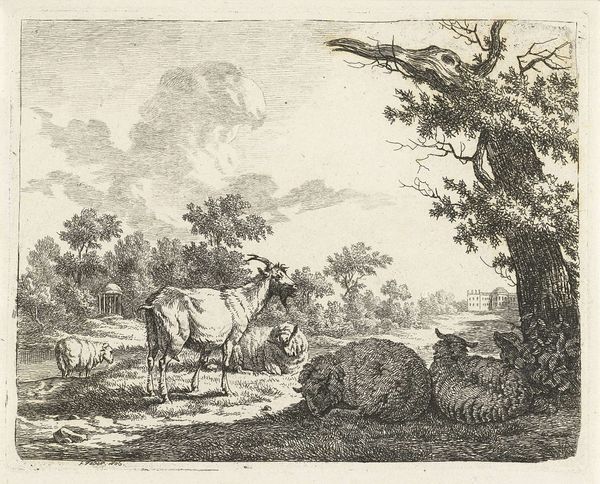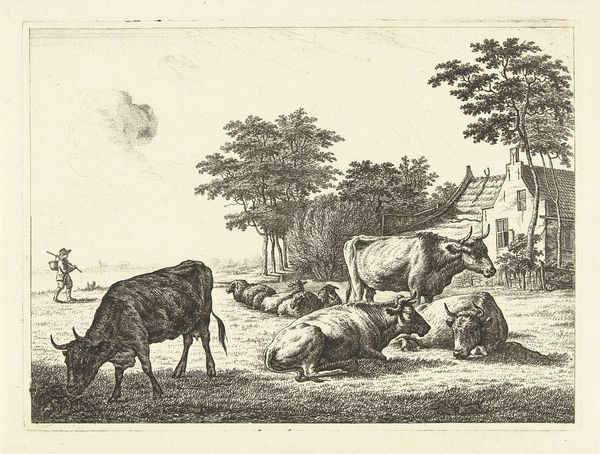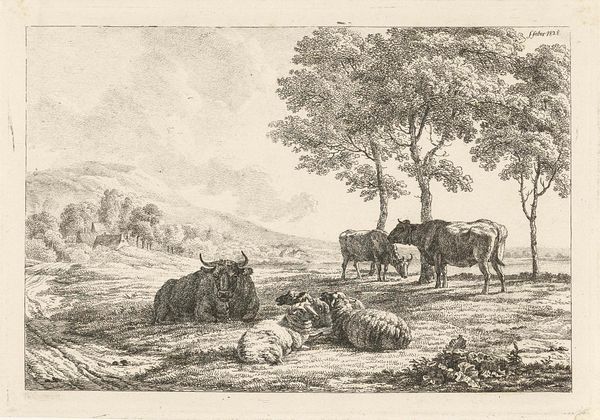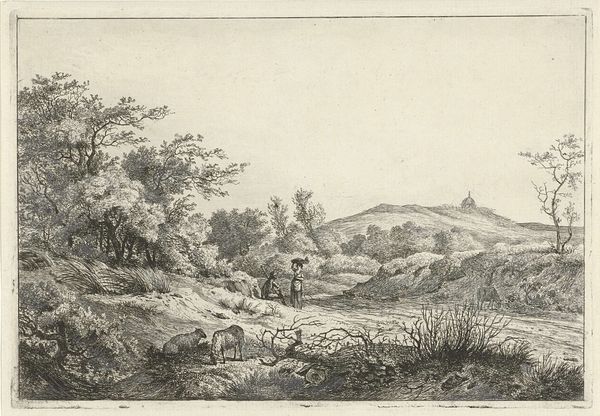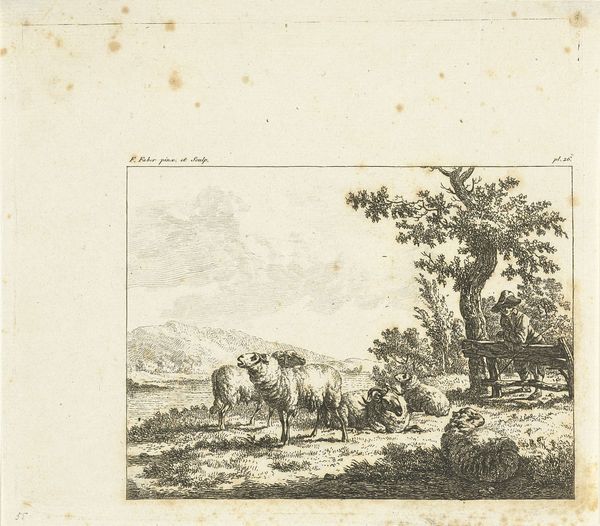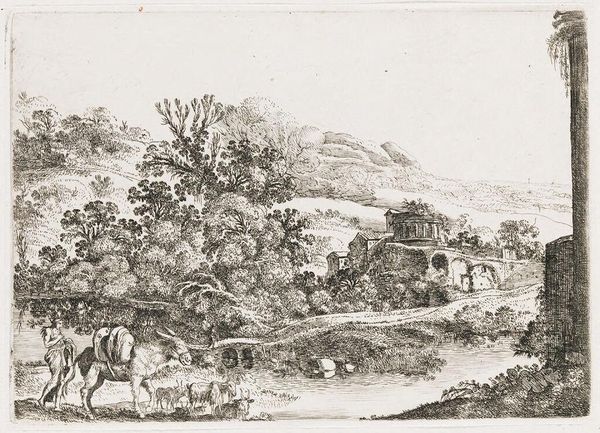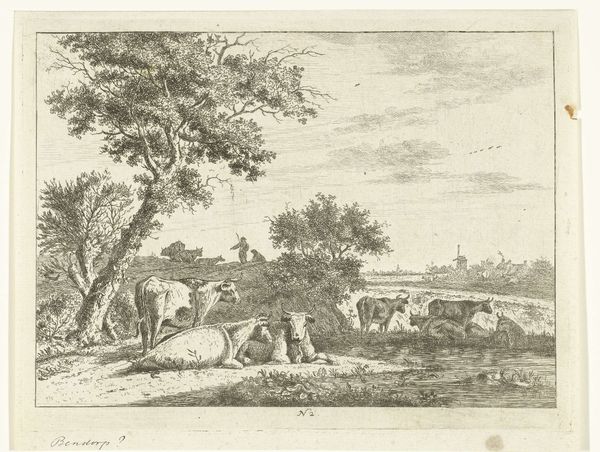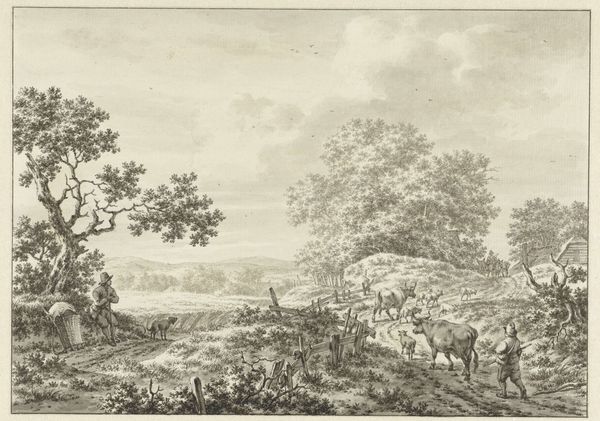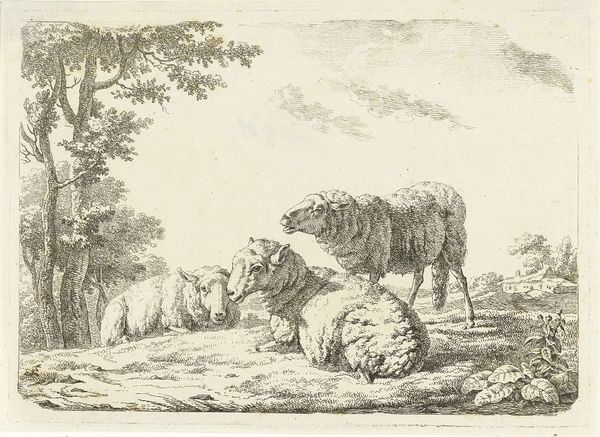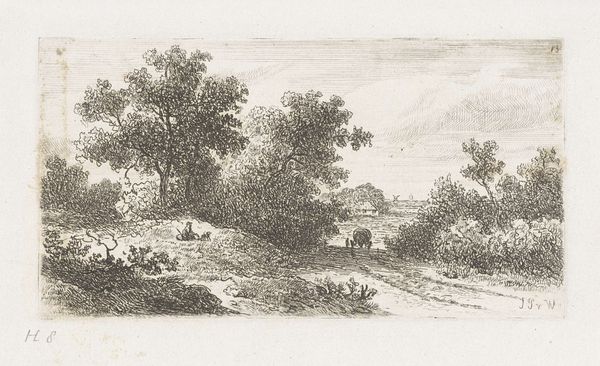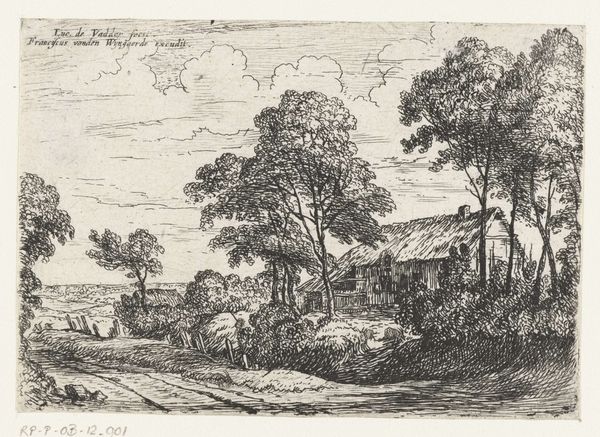
drawing, etching, pencil, engraving
#
landscape illustration sketch
#
drawing
#
light pencil work
#
quirky sketch
#
pen sketch
#
etching
#
pencil sketch
#
landscape
#
figuration
#
personal sketchbook
#
sketchwork
#
romanticism
#
pen-ink sketch
#
pencil
#
line
#
pen work
#
sketchbook drawing
#
genre-painting
#
engraving
#
realism
Dimensions: height 140 mm, width 194 mm
Copyright: Rijks Museum: Open Domain
Frédéric Théodore Faber created this etching, "Landschap met liggende herder bij drie schapen," or "Landscape with reclining shepherd and three sheep," in the Netherlands at a time of great social upheaval. Consider the image: a shepherd passively watches over his flock, a quaint scene of rural harmony. But what does it conceal? In Faber’s time, the Netherlands was undergoing significant political and economic change, from French occupation to the Industrial Revolution. Agricultural labor was becoming increasingly precarious, and many rural workers were being displaced. Images of pastoral tranquility, like this one, served a very specific social function. One could even say that they were a form of propaganda, masking the harsh realities of rural life and promoting an idealized vision of a stable, hierarchical society. By studying the artist's other works, the prevailing social attitudes of the time, and the institutions that supported such imagery, we can gain a richer understanding of the complex social forces that shaped its creation.
Comments
No comments
Be the first to comment and join the conversation on the ultimate creative platform.

